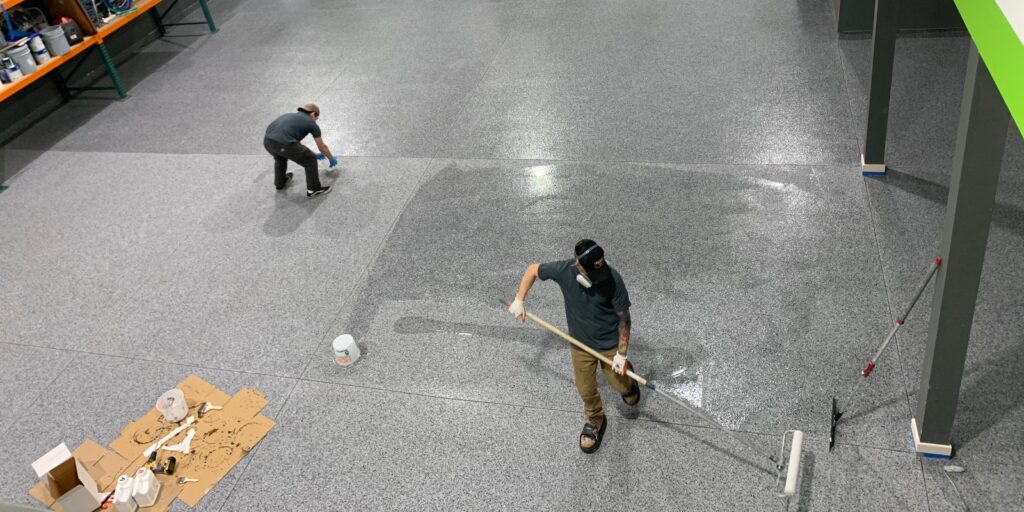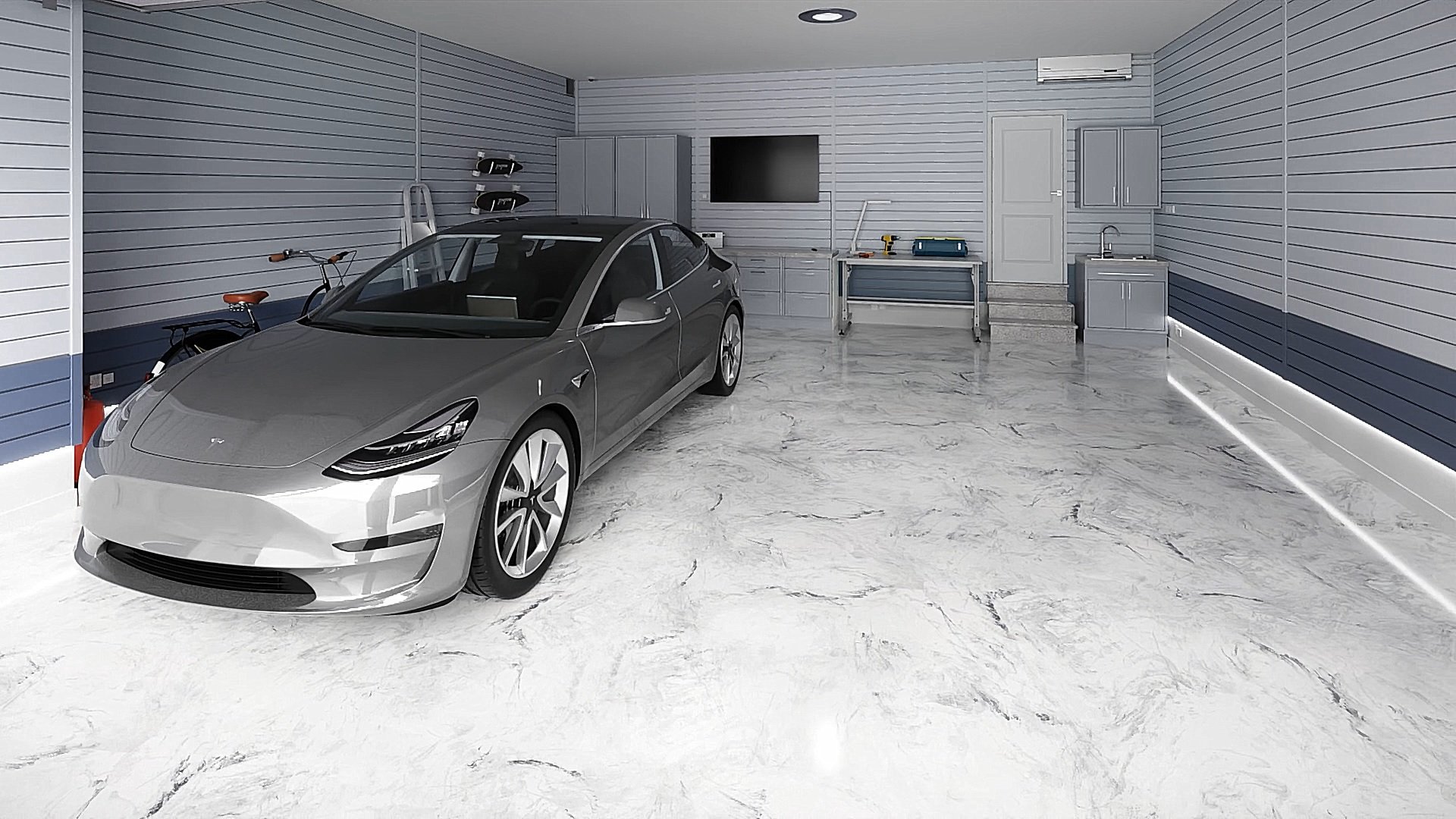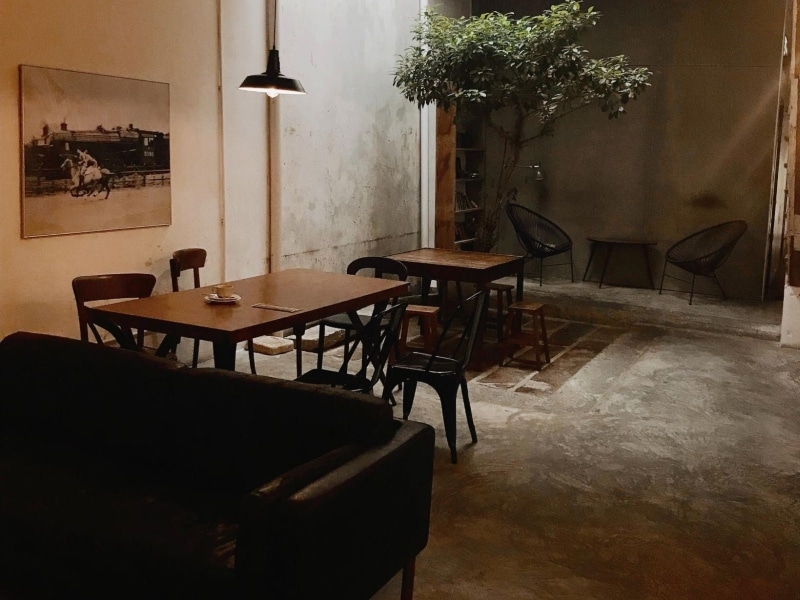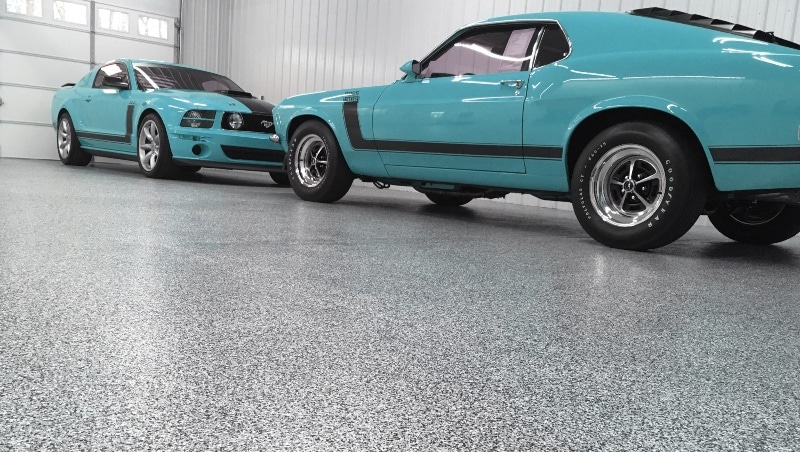How Much Does Epoxy Flooring Cost? A Comprehensive Guide
Imagine stepping into a room where the floor isn’t just a floor, but a seamless expanse of color and shine that transforms the space into something out of a design magazine. This isn’t just any ordinary flooring; this is the world of epoxy flooring – a realm where durability meets sleek aesthetics. But as you marvel at this stunning addition to interior spaces, a crucial question bubbles up: how much does epoxy flooring cost? Let’s dive deep into the ocean of epoxy flooring, navigating through its costs, to emerge with a treasure trove of knowledge that demystifies the price tag attached to these lustrous floors.
Understanding Epoxy Flooring
Understanding the cost of epoxy flooring involves navigating a complex landscape of factors, from the type of epoxy used to the area’s square footage and the desired finish. This flooring solution, known for its durability and aesthetic appeal, comes with a range of pricing that can fluctuate based on materials, labor, and design intricacies. The choice between a DIY approach and professional installation also plays a significant role in the overall expenditure, making it crucial for homeowners to assess their skill level and the project’s demands carefully. Additionally, the inclusion of decorative elements such as metallic flakes or quartz can further influence the financial outlay, highlighting the importance of detailed planning and budgeting.
Moreover, the geographical location and the condition of the existing floor can impact the preparation requirements and, consequently, the cost. Epoxy flooring’s longevity and low maintenance needs are attractive attributes that contribute to its overall value proposition. However, understanding the initial investment’s nuances is essential for those considering this flooring option. Prospective buyers should thoroughly research and possibly consult with professionals to gain a comprehensive understanding of what the project entails. This ensures that expectations align with reality, allowing for informed decision-making that balances aesthetics, functionality, and cost.
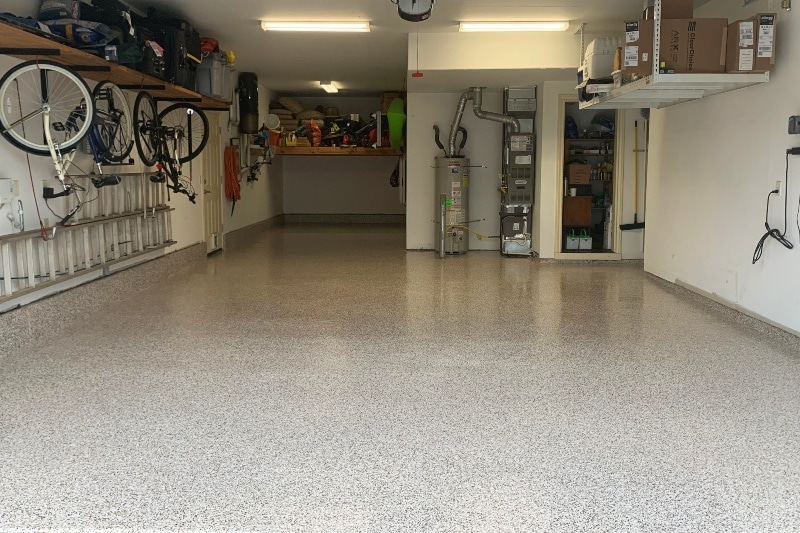
The Factors That Influence Cost
The cost of epoxy flooring is influenced by a myriad of factors, each playing a crucial role in the final price tag. One of the primary considerations is the size of the area to be covered; larger spaces require more materials and labor, inevitably driving up costs. The condition of the existing floor also matters significantly, as floors that need extensive preparation or repair before the epoxy application can increase the project’s complexity and expense. Additionally, the choice of epoxy type, from standard coatings to more specialized or decorative options, affects both the material costs and the expertise required for application, further influencing the overall expenditure.
Geographical location is another critical factor affecting epoxy flooring costs, with prices varying widely between different regions due to labor costs and material availability. The desired finish, incorporating various colors, patterns, or textures, can also impact the price, as more intricate designs demand higher levels of skill and longer working hours to achieve. Furthermore, the quality of materials chosen plays a significant role; opting for premium epoxy resins and aggregates can elevate both the durability and the aesthetic appeal of the flooring but at a higher cost. Understanding these factors allows individuals to make informed decisions when considering epoxy flooring, balancing their desires for quality and beauty with their budget constraints.
DIY vs. Professional Installation
When it comes to epoxy flooring, homeowners often grapple with the choice between DIY and professional installation. The appeal of a DIY project lies in the potential for cost savings and the personal satisfaction that comes from completing a home improvement task. DIY epoxy kits are designed to be user-friendly, providing the essentials needed to coat a garage floor or similar surface. However, these kits may not offer the same quality or durability as the materials used by professionals. The thickness of the coating applied in a DIY project typically falls short of what can be achieved professionally, which can significantly impact the floor’s longevity and resistance to wear and tear.
Professional installation of epoxy flooring, while initially seeming more costly, brings with it a level of expertise and access to superior materials that DIY kits cannot match. Professionals are skilled in surface preparation, a critical step for ensuring the epoxy adheres properly and lasts. They have the tools and knowledge to apply a thicker, more durable coating, often three to six times thicker than what a DIY kit can achieve. This not only enhances the floor’s resilience but also its aesthetic appeal. Choosing professional installation can result in a longer-lasting, more attractive finish, making it a worthwhile investment for those prioritizing quality and durability in their flooring solutions.
Maintenance and Longevity
Epoxy flooring is renowned for its durability and longevity, often lasting between 10 to 20 years when properly maintained. The key to maximizing the lifespan of an epoxy floor lies in regular maintenance and care. Simple practices such as sweeping the floor weekly to remove dirt and debris, along with wet mopping fortnightly or monthly, depending on usage, can significantly contribute to preserving the floor’s condition. Proper maintenance not only keeps the floor looking pristine but also prevents wear and tear that could shorten its lifespan.
Moreover, the durability of epoxy flooring can be enhanced through mindful use and maintenance routines. Avoiding harsh chemicals and cleaning agents that can degrade the epoxy material is crucial. Instead, using cleaning solutions recommended for epoxy floors can help maintain their sheen and integrity over time. Regular checks for any signs of damage and addressing them promptly can prevent minor issues from escalating into major repairs. Adhering to these maintenance tips can extend the life of epoxy flooring well beyond its expected years, ensuring it remains a cost-effective and attractive option for both residential and commercial spaces.
The Aesthetic Factor
The aesthetic appeal of epoxy floor is an increasingly significant factor for homeowners and commercial space managers alike, distinguishing it from traditional flooring options. Its seamless, high-gloss finish not only enhances the brightness of interior areas by reflecting light but also offers a sleek and sophisticated appearance that can be customized according to individual preferences. The versatility of epoxy allows for the incorporation of various colors, patterns, and even metallic effects, enabling a unique floor design that can complement any decor style. This customization potential transforms floors from mere functional surfaces into integral elements of a space’s overall design scheme.
Moreover, the smooth and continuous surface of epoxy flooring contributes to a cleaner and more cohesive look, free from the grout lines and seams typical of tile and other flooring materials. This characteristic not only elevates the visual appeal but also simplifies maintenance, as there are fewer crevices where dirt and grime can accumulate. The ability to integrate decorative aspects, such as logos or wayfinding elements, further extends the aesthetic versatility of epoxy flooring. As a result, its application spans beyond industrial settings to include retail spaces, offices, and homes, where both functionality and aesthetics are paramount.
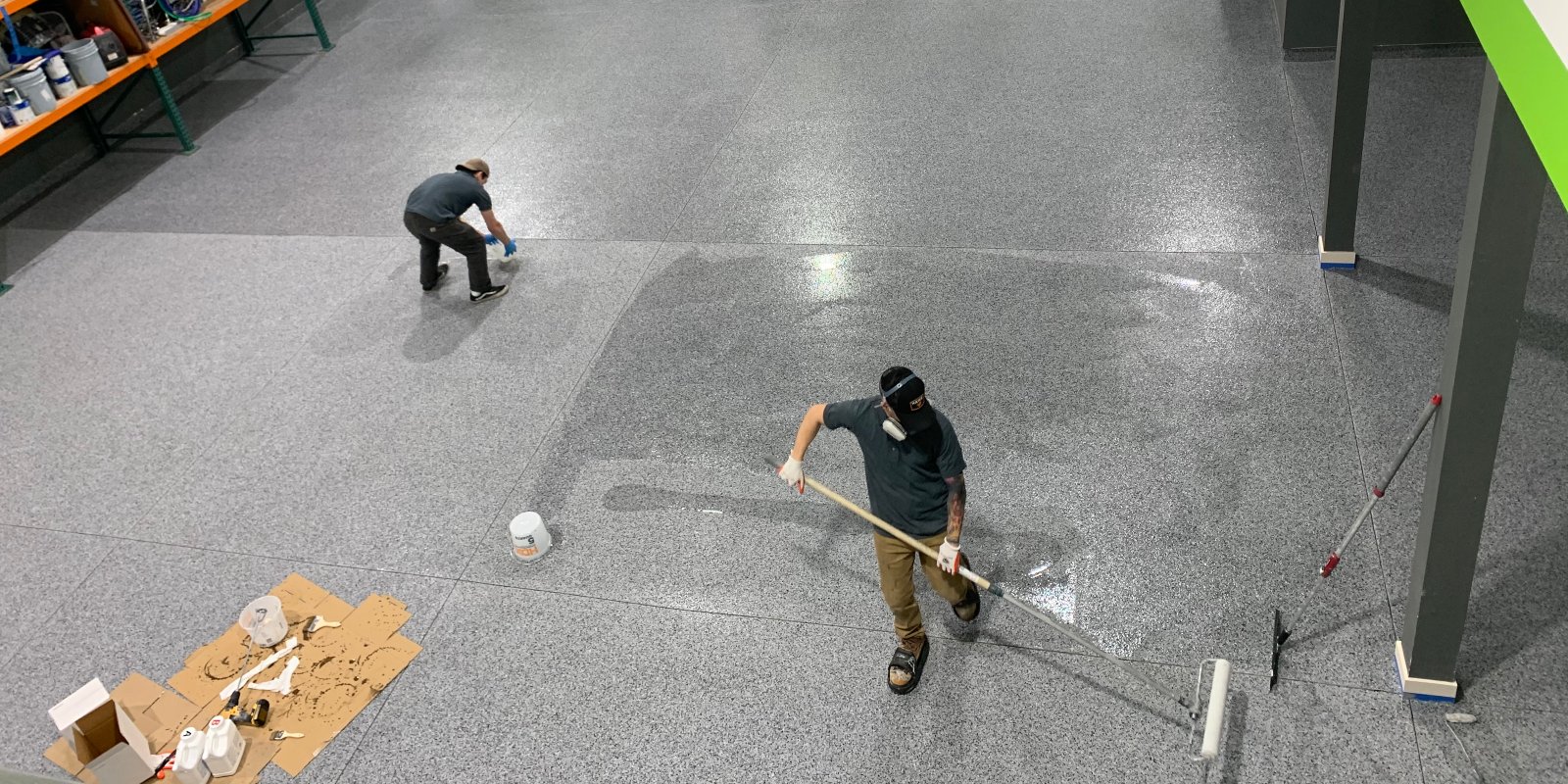
Comparing Costs with Other Flooring Types
Epoxy flooring emerges as a competitive option when comparing costs with other types of flooring. Its affordability is often highlighted, especially in contexts where long-term durability and aesthetic appeal are valued. While the initial investment in epoxy flooring might appear higher than some alternatives, its resilience against wear, chemical spills, and heavy traffic contributes to lower maintenance and replacement costs over time. This aspect makes it an economically viable choice for both residential garages and commercial spaces seeking a balance between upfront expenses and ongoing savings.
Furthermore, when juxtaposed with options such as vinyl, tile, or laminate, epoxy flooring presents an intriguing cost-benefit ratio. Its ability to last significantly longer than some cheaper alternatives reduces the frequency and thus the overall expense of renovations. Additionally, the aesthetic versatility of epoxy, allowing for custom designs and finishes, can enhance property values without the need for expensive materials like high-end tiles or hardwoods. These factors position epoxy flooring as a practical solution for those looking to invest wisely in their property’s functionality and appearance, offering a compelling blend of cost-efficiency and style.
Conclusion
In conclusion, diving into the world of epoxy flooring reveals a landscape where costs are as varied as the floors themselves. From the basic, no-frills application to the most elaborate designs, epoxy flooring offers a spectrum of price points suited to different budgets and needs. While the initial investment might seem steep compared to traditional flooring options, the unparalleled durability, minimal maintenance, and sheer aesthetic appeal of epoxy flooring underscore its value. Whether you’re renovating your home or upgrading your commercial space, understanding the nuances of epoxy flooring costs ensures that you make an informed decision that marries form, function, and financial sense. In the end, epoxy flooring isn’t just about what it costs you, but about the value it adds to your space.
https://www.google.com/maps?cid=2589512530409833629


